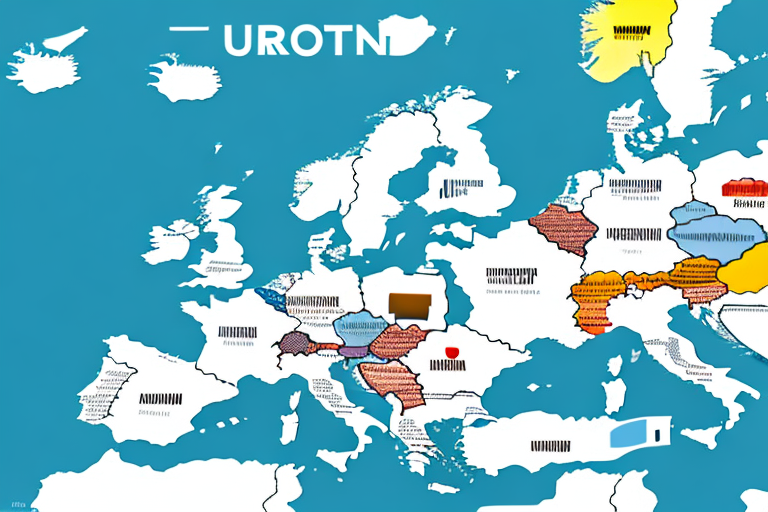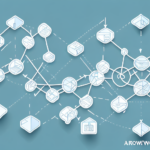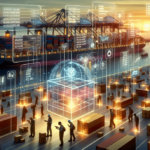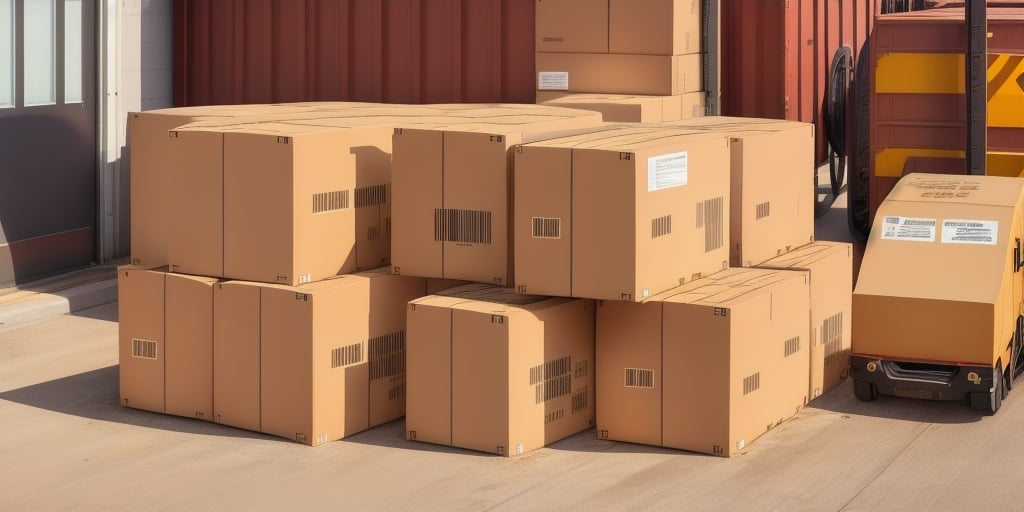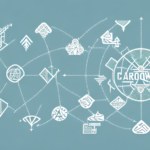Understanding the Supply Chain and TARIC: The Integrated Tariff of the European Union
The global economy relies on a complex network of suppliers, manufacturers, distributors, and retailers working together to deliver goods and services to consumers worldwide. This network, known as the supply chain, is crucial in shaping the economic landscape of various countries. In today's increasingly interconnected and complex trade environment, understanding the supply chain is essential. Additionally, grasping the European Union's Integrated Tariff System (TARIC) is vital for regulating trade within the EU and managing customs duties.
The Basics of the Supply Chain and Why It Matters
The supply chain encompasses all activities involved in the production, distribution, and delivery of goods and services to consumers. It includes:
- Raw material suppliers
- Manufacturers
- Wholesalers
- Distributors
- Retailers
- Logistics providers
An efficient supply chain directly impacts product quality, production efficiency, and customer satisfaction. According to the European Commission, businesses with optimized supply chains can reduce costs by up to 20% and improve delivery times by 30%.
Managing a supply chain involves coordinating multiple parties to ensure smooth operations. Challenges include:
- Clear communication
- Collaboration among stakeholders
- Coordination of logistics
- Anticipating market changes
- Responding to external disruptions like natural disasters or geopolitical events
Another critical aspect is sustainability. With rising consumer awareness, businesses are pressured to adopt sustainable practices, such as:
- Sourcing materials from renewable sources
- Reducing waste and emissions
- Ensuring ethical labor practices
Emphasizing sustainability not only meets consumer expectations but also enhances cost-efficiency and strengthens the company’s reputation.
How Tariffs Affect the Supply Chain and Trade
Tariffs are government-imposed trade barriers that regulate international trade by increasing the cost of imported goods, making them less competitive compared to domestic products. This impacts the supply chain by:
- Raising the cost of raw materials
- Affecting production and delivery efficiency
- Creating uncertainty for businesses in planning and investment
The Integrated Tariff of the European Union (TARIC) plays a pivotal role in this context. TARIC is a comprehensive database providing information on customs duties and trade measures for products imported into the EU. It assists businesses in:
- Understanding applicable tariffs and regulations
- Ensuring compliance with EU standards
- Reducing the risk of penalties and delays
Interestingly, tariffs can have positive effects, such as:
- Protecting domestic industries
- Promoting local production and job creation
- Serving as leverage in international trade negotiations to level the playing field
What is TARIC and How Does It Work?
TARIC is the European Union's integrated tariff system designed to regulate intra-EU trade and manage customs duties for importers and exporters. Managed by the European Commission, TARIC assigns a unique Tariff Code to each product based on its description and specifications. This classification determines the applicable customs duties and taxes.
Benefits of TARIC include:
- Transparency in customs duties and taxes
- Predictability for business planning and budgeting
- Prevention of fraud and illegal trade through accurate product classification
However, navigating TARIC can be challenging due to its complexity. Businesses often rely on customs experts or specialized software to ensure accurate classification and compliance.
The History of TARIC and Its Evolution
Introduced in 1993, TARIC aimed to simplify and harmonize customs duties within the EU. Over the years, it has evolved to include:
- New product categories and subcategories
- Enhanced functionalities to meet business and EU needs
The latest version, TARIC 2023, encompasses over 15,000 product categories, reflecting the dynamic nature of global trade and technological advancements.
The Benefits of Using TARIC for Importers and Exporters
TARIC streamlines the customs process by providing a centralized platform for accessing tariff information. Key benefits include:
- Ease of determining customs duties and taxes
- Access to preferential tariff rates under various trade agreements
- Competitive advantage in the EU market
For example, businesses can apply for reduced or zero tariffs under trade agreements between the EU and countries like Canada (CETA) or Japan (EPA), significantly lowering import costs.
The Different Types of Tariffs in the European Union
The EU employs several types of tariffs, including:
- Ad Valorem Tariffs: Based on a percentage of the product's value
- Specific Tariffs: Based on the product's weight or volume
Additionally, the EU has numerous trade agreements that offer preferential tariffs to businesses meeting specific criteria, such as those participating in free trade agreements with third countries.
Understanding these tariff types is crucial for accurately determining customs duties and taxes under the TARIC system.
Understanding the Tariff Classification System in TARIC
TARIC utilizes a hierarchical classification system to assign unique Tariff Codes to products. This system categorizes products into:
- Chapters
- Subchapters
Each category corresponds to a specific Tariff Code, simplifying the classification process for businesses. Accurate classification is essential for determining the correct duties and taxes, ensuring compliance, and avoiding penalties.
How to Use TARIC to Determine Your Product's Tariff Code
Determining a product's Tariff Code can be complex due to the extensive range of categories. TARIC offers several tools to assist businesses:
- Search Functions: Search by keywords, descriptions, or Harmonized System (HS) codes
- Online Tools: Interactive tools available on the ShipScience platform
- Expert Support: Access to customs brokers and consultants
For detailed guidance, businesses can refer to the official TARIC portal maintained by the European Commission.
Navigating the Complexities of EU Customs with TARIC
The EU Customs Union regulates trade between member states and countries outside the EU. Key aspects include:
- Customs declarations and documentation
- Import and export procedures
- Compliance with EU regulations
TARIC simplifies these processes by offering a centralized platform for:
- Accessing up-to-date customs information
- Applying for customs procedures via the electronic customs portal
- Reducing time and costs associated with navigating complex regulations
Effective use of TARIC can lead to faster clearance times and lower administrative burdens.
Common Issues with Tariffs and How to Avoid Them
Businesses may face several challenges when dealing with tariffs and TARIC, such as:
- Errors in Tariff Code classification
- Incorrect invoicing practices
- Non-compliance with customs regulations
These issues can result in delays, financial penalties, or even seizure of goods. To mitigate these risks, businesses should:
- Ensure accurate and detailed product descriptions
- Stay updated with current customs regulations
- Seek expert advice from customs brokers or consultants
- Utilize electronic customs systems like TARIC for better accuracy
The Future of TARIC and Its Impact on the Supply Chain
TARIC is continuously evolving to accommodate the dynamic nature of global trade. Future developments include:
- Expansion of product categories and subcategories
- Enhanced search functionalities for easier navigation
- Better integration with other electronic customs systems
These advancements aim to further streamline the customs process, reduce associated costs, and increase transparency within the EU customs framework. As a result, businesses can expect a more efficient and harmonized trading environment, fostering better supply chain management and international trade relations.
Case Studies: Successful Implementation of TARIC in Global Trade
Numerous businesses have leveraged TARIC to enhance their global trade operations. For instance:
- Company A: Reduced customs duties by utilizing preferential tariffs under EU trade agreements, leading to a 15% cost savings.
- Company B: Improved compliance and avoided penalties by accurately classifying products using TARIC, resulting in faster clearance times.
These case studies demonstrate the tangible benefits of integrating TARIC into business operations, highlighting increased efficiency, cost savings, and improved regulatory compliance.
Expert Insights: Understanding the Implications of Brexit on Tariffs and Trade
The United Kingdom's exit from the EU (Brexit) has reshaped trade dynamics between the UK and the EU. Key implications include:
- Reintroduction of customs checks and tariffs on goods traded between the UK and EU
- Need for businesses to obtain new licenses and adhere to updated regulations
- Potential delays in supply chains due to increased bureaucratic procedures
Experts recommend that businesses:
- Stay informed on the latest trade agreements and regulations
- Adapt supply chain strategies to mitigate disruptions
- Engage with customs brokers to navigate the new trade landscape effectively
For comprehensive guidance, businesses can consult resources provided by the ShipScience Brexit Information Hub and official EU communications.
In conclusion, a deep understanding of the supply chain and the TARIC tariff classification system is essential for businesses aiming to optimize operations and compete on a global scale. TARIC offers a centralized platform for accessing crucial customs information, determining applicable duties and taxes, and streamlining customs procedures. By leveraging electronic customs systems like TARIC, businesses can avoid common tariff-related issues, enhance compliance, and benefit from evolving trade infrastructures within the EU.













